Quick Links
- Pityriasis Rosea
- Molluscum Contagiosum
- Cold Sores & Fever Blisters
- Chicken Pox
- Hand, Foot and Mouth Disease
- Shingles
- Warts
- Treatment for Pityriasis Rosea
- Treatment for Molluscum Contagiosum
- Frequently Asked Questions About Molluscum Contagiosum
- Treatment for Cold Sores & Fever Blisters
- Treatment for Chicken Pox
- Treatment for Hand, Foot and Mouth Disease
- Treatment for Shingles
- Treatment for Warts
Viral infections of the skin are common and include warts, cold sores, chickenpox, shingles, molluscum contagiosum, pityriasis rosea, and hand, foot, and mouth disease. The three main types of viruses that cause most viral skin infections are the human papillomavirus, the herpes simplex virus, and the pox virus. While these viruses cannot be cured, their effects on the skin can be prevented or minimized through proper treatment by a medical professional.
Pityriasis Rosea
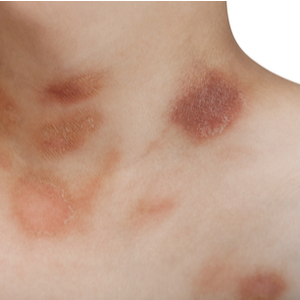
Pityriasis rosea is a scaly, itchy, reddish-pink rash that is common in children and young adults and usually occurs in the spring and fall seasons. An outbreak of pityriasis rosea is often accompanied by cold symptoms.
The first lesion (or “herald patch”) appears most often on the back or stomach, followed by a general outbreak on the lower abdomen. Pityriasis rosea is not contagious and lasts approximately 1 to 3 months.
Treatment for Pityriasis Rosea
Your Trillium Creek Dermatology skin experts can provide antihistamines to alleviate itching, as well as steroid creams and other topical preparations to treat the outbreak. Pityriasis rosea generally clears up completely, without scarring and without recurring. We are serving the following communities and those surrounding: Wooster, Wadsworth, Medina, Brunswick, Strongsville, and Hinkley.
Molluscum Contagiosum
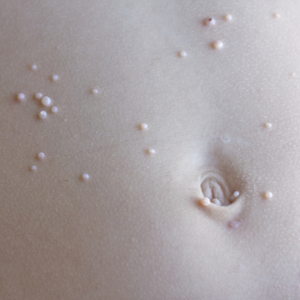
Molluscum contagiosum is a viral infection of the skin that causes small flesh-colored bumps on the skin surface. The number of lesions usually ranged from 2 to 20, and appear in clusters. The infection is most common in children and adolescents, although adults can also be affected. While the condition is not harmful and does not have any other symptoms, the virus inside the lesions is contagious.
Treatment for Molluscum Contagiosum
Your Trillium Creek Dermatology skin expert will assess the severity of your condition to determine a reasonable course of action. In most cases, the lesions will heal without treatment over a period of 6 to 9 months. Additional treatment options may include removal of the lesions or topical preparations to speed the resolution of the lesions.
Frequently Asked Questions About Molluscum Contagiosum
Does molluscum get worse before it gets better?
How do you know molluscum is healing?
How do you shower with molluscum contagiosum?
How do you wash molluscum contagiosum off clothes?
Is molluscum a big deal?
Should I pop molluscum?
What does molluscum look like in adults?
What part of molluscum is contagious?
Can a child get molluscum twice?
Can you use salicylic acid on molluscum?
Does molluscum have a white head?
How did my child get molluscum contagiosum?
How do you get rid of molluscum fast?
What can a dermatologist do for molluscum contagiosum?
What is inside molluscum contagiosum?
Are baths bad for molluscum?
Can healthy adults get molluscum?
Can I remove molluscum myself?
Can molluscum contagiosum be cured?
Can molluscum turn into staph?
Can you squeeze molluscum?
How can I boost my immune system to fight molluscum?
Is molluscum contagiosum itchy?
Is there an oral medication for molluscum?
What cream can I use for molluscum?
Who is immune to molluscum contagiosum?
Does steroid cream help molluscum?
How do you get rid of molluscum contagiosum at home?
How do you get rid of molluscum pubic area?
How do you stop molluscum from spreading?
How does duct tape get rid of molluscum?
Is it OK to go swimming with molluscum?
Is molluscum contagiosum an STD?
What is molluscum caused by?
What Molluscum infection looks like?
Cold Sores & Fever Blisters
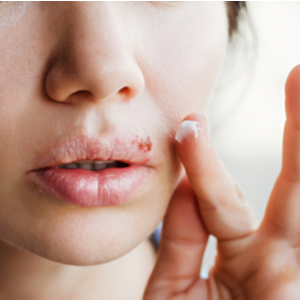
Cold sore and fever blisters are small blisters caused by the herpes simplex virus. Outbreaks usually last approximately 2 weeks or less and can be triggered by sun, wind, or a cold. Cold sores appear around the mouth and can cause soreness of the lips and mouth, tingling of the lips, and itching. Fever blisters can appear anywhere on the skin with similar symptoms. Homeopathy is utilized in stubborn cases.
Treatment for Cold Sores & Fever Blisters
Antiviral medications, both topical and oral, can be used to alleviate the symptoms of cold sores and fever blisters during an outbreak. Your Trillium Creek Dermatology skin expert will determine the severity of your condition and recommend an effective course of treatment to speed recovery and manage pain and itching.
Chicken Pox
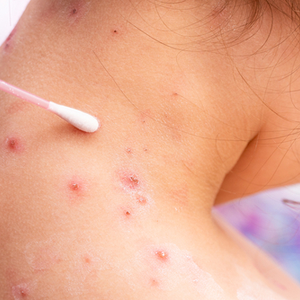
Chicken pox is a highly contagious viral infection caused by the varicella-zoster virus and is most often seen in children ages 5 to 10. It causes a red, itchy rash on the face, scalp, chest, back, or over the entire body. Itching can range from mild to severe. The rash usually appears 2 weeks after exposure to the virus and may be accompanied by fever, abdominal pain, loss of appetite, headache, and general malaise.
Treatment for Chicken Pox
Most cases of chicken pox heal without complications and with minimal scarring if scratching can be controlled. Do not give anyone with chicken pox (child or adult) any medication containing aspirin as the combination is linked to Rhye’s syndrome.
Seek emergency medical care for breathing difficulties, confusion, disorientation, excessive sleepiness or seizures. Seek medical care for high fever (over 103° F); rash involving an eye; continued dehydration, vomiting, or decreased fluid intake; or secondary skin infections.
Your Trillium Creek Dermatology skin expert may prescribe antiviral medications to shorten the duration of the infection as well as antihistamines to relieve itching.
Hand, Foot and Mouth Disease
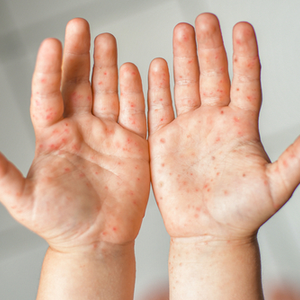
Hand, foot, and mouth disease is a mild but highly contagious viral infection caused by the coxsackievirus that results in sores in the mouth and a rash on the hands and feet. It is common in young children and is spread from close contact, usually through unwashed hands or contaminated surfaces.
Hand, foot, and mouth disease is not associated with foot and mouth disease (also called hoof and mouth disease) found in farm animals. Hand, foot, and mouth disease cannot be contracted from or transmitted to, pets or other animals.
Treatment for Hand, Foot and Mouth Disease
There is no specific treatment for hand, foot, and mouth disease. Your Trillium Creek Dermatology skin expert may recommend pain relievers, because sores in the mouth and throat may make swallowing painful and lead to dehydration. Symptoms generally disappear in 7 to 10 days.
Complications of the coxsackievirus can include viral meningitis and encephalitis but these are very rare. Reduce the risk of infection by practicing good hygiene, especially frequent and thorough hand washing.
Shingles
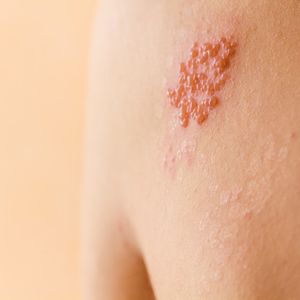
Shingles, also called herpes zoster, is a common viral infection of the nerves that causes very painful blisters on any area of the body. Shingles are caused by a reactivation of the same virus that causes chickenpox (varicella-zoster virus).
Once you contract chickenpox, the virus lies dormant in nerves until it is reactivated, often in persons over age 50.
Treatment for Shingles
Shingles has to run its course, because there is no cure for the disease. Your Trillium Creek Dermatology skin expert can provide pain relief, antibiotics for secondary infections, and antiviral preparations to minimize symptoms and nerve damage. In addition, you may benefit from bed rest, cool compresses applied to affected skin areas, and antidepressants to treat the emotional effects that can result from the disease.
Warts
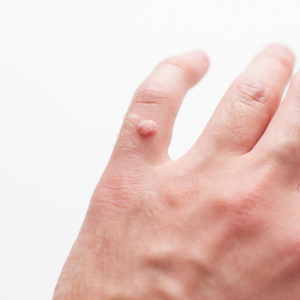
Warts are non-cancerous skin growths caused by the human papilloma virus. They are common around the nails, back of the hand and soles of the feet. Warts can be raised and rough, flat and scaly or long and narrow, depending on their type and location on the skin.
Treatment for Warts
Your Trillium Creek Dermatology skin expert can offer a wide range of treatments to remove warts, depending on the type, location and severity. Common treatments include salicylic and lactic acid, cryotherapy (freezing), electrodesiccation (using electrical current), immunotherapy and laser surgery. Warts are prone to recurrence, so repeated treatments may be necessary.



